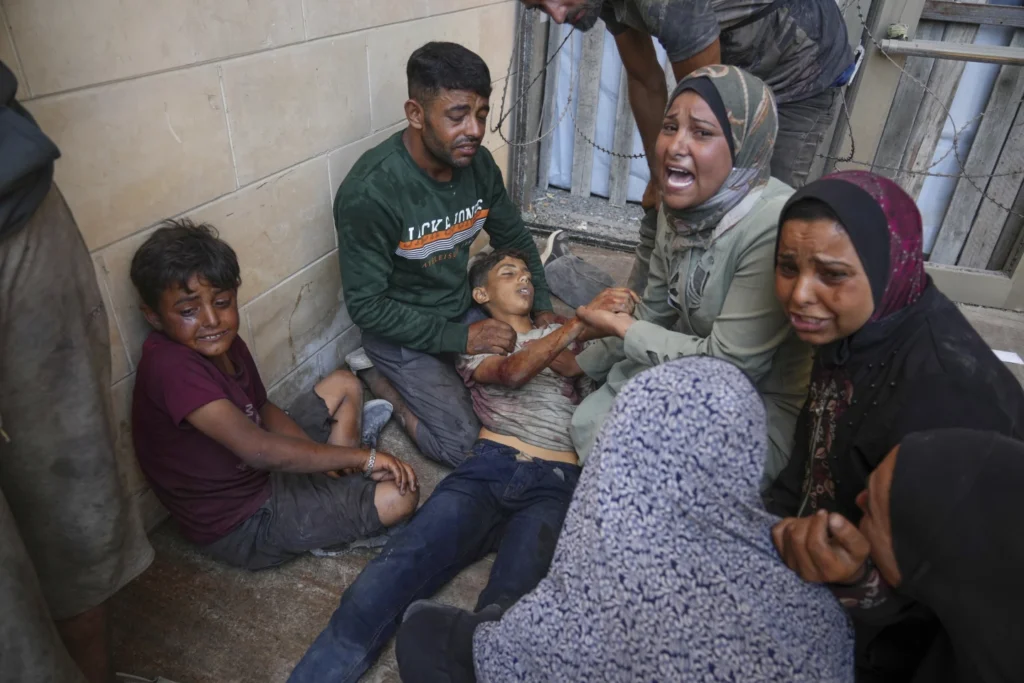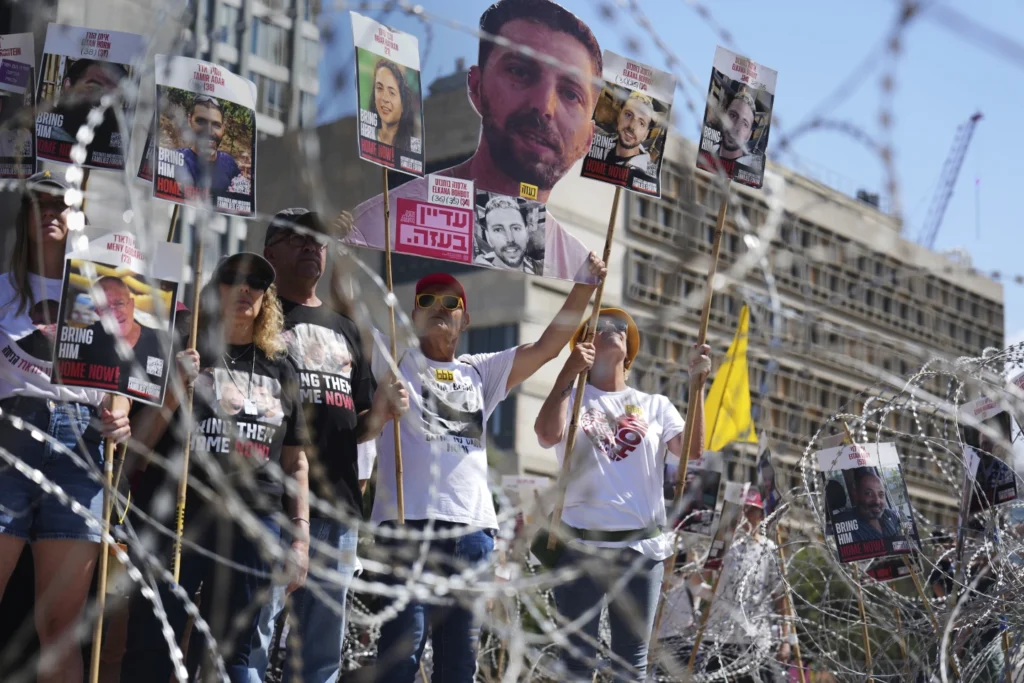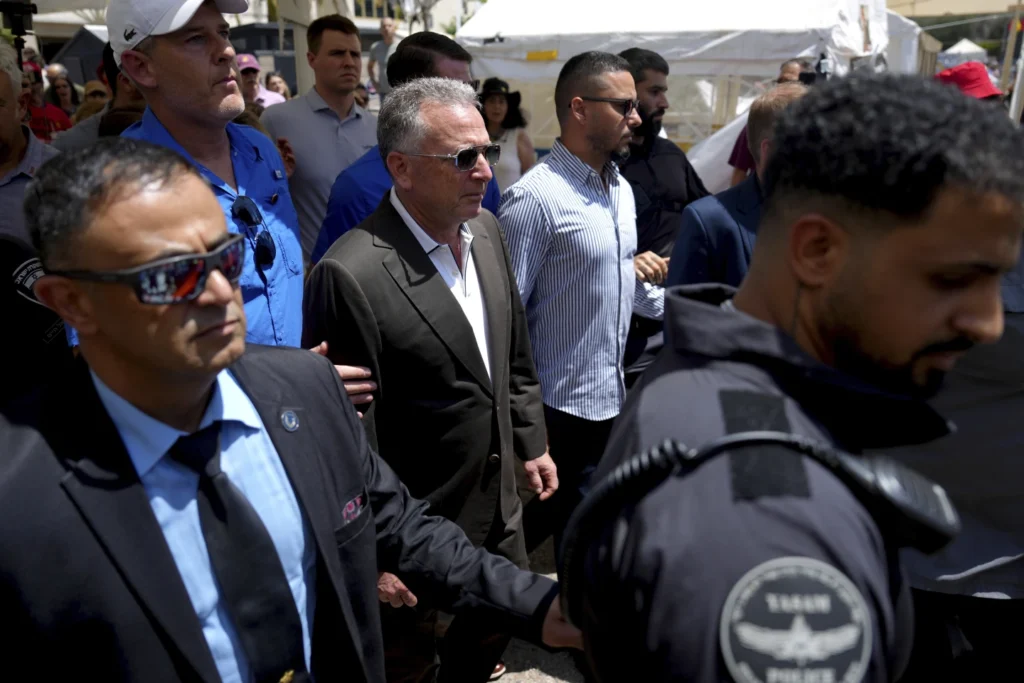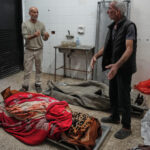Israeli Fire Kills At Least 18 in Gaza, Witkoff Visits Hostage Families/ Newslooks/ WASHINGTON/ J. Mansour/ Morning Edition/ Israeli gunfire and airstrikes killed at least 18 Palestinians—including people seeking food—near U.S.-backed aid distribution sites in Gaza. U.S. envoy Steve Witkoff visited hostage families in Tel Aviv amid mounting pressure over humanitarian failures. The continued violence and famine conditions prompt international demands for safer aid access.

Aid Violence and Protest – Quick Looks
- Israeli fire killed 18 Palestinians, many of them food seekers near aid sites.
- Violence occurred near Gaza Humanitarian Foundation distribution points.
- Over 850 deaths linked to GHF sites since May, per Gaza health ministry.
- U.S. envoy Steve Witkoff met with hostage families protesting in Tel Aviv.
- Hunger-related deaths, especially among children, continue to rise sharply.
- Israel and GHF deny wrongdoing; international human rights groups condemn the aid model.
- U.S. officials pledged new strategies but did not engage UN agencies.
- International pressure grows as Gaza edges toward catastrophic famine.
- Airdrops expand but aid experts call them inadequate.
- War casualties in Gaza have surpassed 60,000, fueling calls for ceasefire.

Israeli Fire Kills At Least 18 in Gaza, Witkoff Visits Hostage Families
Deep Look
DEIR AL-BALAH, Gaza Strip — At least 18 Palestinians were killed by Israeli airstrikes and gunfire on Saturday, including aid-seekers lining up at distribution centers amid worsening famine conditions in Gaza’s more than 22-month military crisis.
The fatalities occurred near centers run by the Gaza Humanitarian Foundation (GHF), a U.S.- and Israeli-backed group that replaced U.N. aid operations in May. Health officials and UN monitors link hundreds of deaths—over 850 so far—to deadly crowd control tactics around GHF sites. According to Gaza’s Health Ministry, over 1,054 Palestinians have died and thousands more wounded while attempting to access food around GHF locations since late May.
Witnesses describe scenes of chaos as desperate civilians tried to reach aid points. Survivors reported Israeli forces firing directly at crowds, leading to panic and fatalities—despite official claims of only warning shots.
U.S. Envoy Meets Hostage Families in Tel Aviv
Meanwhile in Israel, U.S. Special Envoy Steve Witkoff and Ambassador Mike Huckabee joined protests in Tel Aviv by families demanding the release of hostages still held by Hamas. Witkoff, who recently withdrew from ceasefire negotiations, pledged to explore new ways to secure hostages and push for humanitarian aid delivery despite stalled diplomacy.
Aid Model Under Intense International Scrutiny
The GHF’s distribution model has drawn fierce criticism. International human rights groups and UN agencies have labeled it flawed and dangerous—fueling chaos rather than providing relief. Unique to the GHF system, aid seekers are funneled into militarized zones with sparse crowd management and limited safe zones, increasing risk during distribution attempts.
The UN and aid experts argue that airdrop delivery, while expanding, is inefficient and costly—and urges reopening of road crossings to enable safer, more scalable aid distribution.
Famine Deepens: Hunger-Related Deaths Rise Sharply
Meanwhile, hunger-related deaths are mounting. Gaza’s Health Ministry reports that seven Palestinians died of malnutrition in the past 24 hours—one was a child—adding to over 90 child deaths since the war began. The ongoing famine in Gaza is described by global experts as possibly worse than “worst-case scenario” conditions due to severe aid restrictions and infrastructure collapse.
Calls for Reform and Accountability Grow
Rights groups like Human Rights Watch and Amnesty International have accused both the Israeli military and GHF of transforming aid sites into lethal traps—some even warning the system may violate international humanitarian law. Beyond mounting death tolls, critics say the system bypasses U.N. agencies and funnels civilians into dangerous environments for aid access.
These developments are fueling intense international pressure. Western governments and humanitarian organizations ramp up demands for ceasefire negotiations, humanitarian corridors, and restoration of independent UN aid channels.







